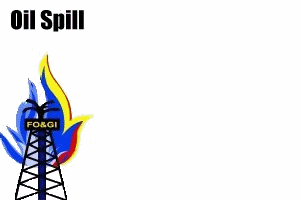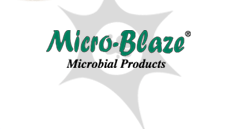

 |
 |
What is an Oil?
Under the Clean Water Act, "oil" means any oil of any kind or in any form. Generally oils fall into the following categories: crude oil and refined petroleum products, edible animal and vegetable oil, other oils of animal and vegetable origin, and other nonpetroleum oils. Because some substances may not be easily recognizable as oils, your facility should check with EPA and the U.S. Coast Guard to make determinations for the substances you store, transfer, and refine.What Must The SPCC Plan Include?
Your SPCC plan must clearly addresses the following three areas:
Operating procedures that prevent oil spills.Specifically, your SPCC plan must include the following elements in sequence (40 CFR112.7):
Control measures installed to prevent a spill from reaching navigable waters.
Countermeasures to contain, cleanup, and mitigate the effects of an oil spill that reaches navigable waters.
Written descriptions of any spills occurring within the past year, corrective actions taken, and plans for preventing their reoccurrenceDATES: This final rule is effective April 17, 2003.
A prediction of the direction, rate of flow, and total quantity of oil that could potentially be discharged where experience indicates a potential for equipment failure
A description of containment and/or diversionary structures to prevent oil from reaching navigable waters.
If containment and/or diversionary structures are not practical, a strong oil spill contingency plan (40 CFR 109) and a written commitment of manpower, equipment, and materials to quickly control and remove discharges of oil.
Documentation that the facility design, construction, operation, and maintenance conforms with the requirements of 40 CFR 112.7 (e).
Certification by a Professional Engineer (PE) and appropriate management tools.
| Industry category | NAICS code | |
| Crop and Animal Production | 111 – 112 | |
| Crude Petroleum and Natural Gas Extraction | 211111 | |
| Coal Mining, Non-Metallic Mineral Mining and Quarrying | 2121/2123/213114/213116 | |
| Electric Power Generation, Transmission, and Distribution | 2211 | |
| Heavy Construction | 234 | |
| Petroleum and Coal Products Manufacturing | 324 | |
| Other Manufacturing | 31 – 33 | |
| Petroleum Bulk Stations and Terminals | 42271 | |
| Automotive Rental and Leasing | 5321 | |
| Heating Oil Dealers | 454311 | |
| Transportation (including pipelines), Warehousing, and Marinas | 482 – 486/488112 – 48819/4883/48849/492 – 493 71393 | |
| Elementary and Secondary Schools, Colleges | 6111 – 6113 | |
| Hospitals/Nursing and Residential Care Facilities | 622 – 623 | |
Diesel Spill Caddy units available soon for the Oil and Gas industry, Off Shore Applications. Barges, Work Boats.
How does the cost of a Spill Caddy
compare to the FINE? You
will be surprised
What
does you State EPA require? What are the penalties
Can you afford not to be preapared
Fax: Order
form
and accessory pricing in PDF